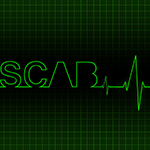
Picking apart Pictures with Gary
Images. We’re about to spend a whole year looking at them. Dissecting them, mulling them over as intently as the most recent song your ex added to your joint playlist. This is Ad school; if there’s one thing we’re going to do is dissect Ads, and if we’re going to do it, we may as well do it well. This is the SCA. After all, they don’t call it the best Ad school in the world for nothing.
This is where Graphic Design’s Gary Neil’s most recent class Thinking Visually, comes galloping in. Thinking Visually introduced us to a gorgeous tiered system of thinking that allows us to put words to elements of images, making it easier to dismantle them. By picking images apart, we can evaluate them to decide whether the image in front of us has found the most effective depiction of the message that the article/product/company the image is trying to convey. It’s an effective and time-efficient solution that allows us to be sure that the picture we’re creating is both captivating and worth all of our precious energy. So, with that information in mind, how do we go about identifying these bones for creating unexpected, compelling imagery? Well, it’s all built upon the following recipe.
In Gary’s expertise, graphic design is 70-80% thinking and 20-30% making. So, by all means, jot down your ideas, utilise that notebook, make it messy, play with it and allow it to flow – but if it all comes to you too easy, then don’t trust it. Pick it apart until you’re confident you’re onto something good. Your thinking and making should feed into the other’s flow, and when you need to be sure you’re on the right track, touch base with the project’s brief whenever possible.
Now, once you get to the drawing, don’t just draw your ideas; draw them with these ingredients: Substitution, Inversion and Surrealism.
Substitution is the art of replacing objects mindfully. For example, replacing the shadow of a man with the shadow of a wolf would read to us as ‘this man’s werewolf’. Or a furry. Depending on how deep into the internet you’ve dived.
Inversion is when a relationship between an object or person you expect to see has been turned on its head, such as a bull standing in the middle of a perfectly maintained china shop or flowers blooming in the snow.
Surrealism is, as the name suggests, surreal. It utilises unreal imagery allowing curiosity to act as its hook. An example would be someone swimming through tall grass or Gary’s own instance of a dog digging through tarmac. Creating an image that could never exist makes the idea more sticky in the viewer’s brain.
Each one of these ingredients will certainly lead you to a different variation of your juicy idea. Even the use of just one of them may suit your grand plan best. Or maybe you’ll combine two of them, or three of them! Go crazy; just be on brief.
Thinking Visually has become one of my favourite classes so far. A recipe for creativity may sound somewhat restrictive, but I’ve found it freeing to have some options laid before me instead of shouting out into the void for inspiration. As a creative person, too much openness can lead to indecision. It is methodical creativity that will help you produce work you’re proud of when working in an environment such as advertising that is ultimately as reliant on turnaround as it is on quality. A little structure allows you to take that all too daunting first step a little more sure-footedly.











